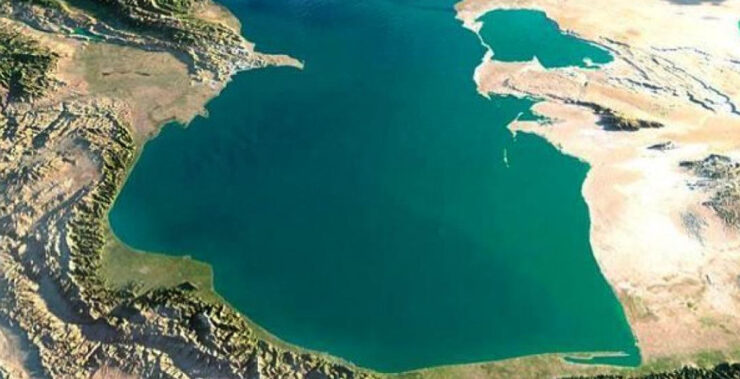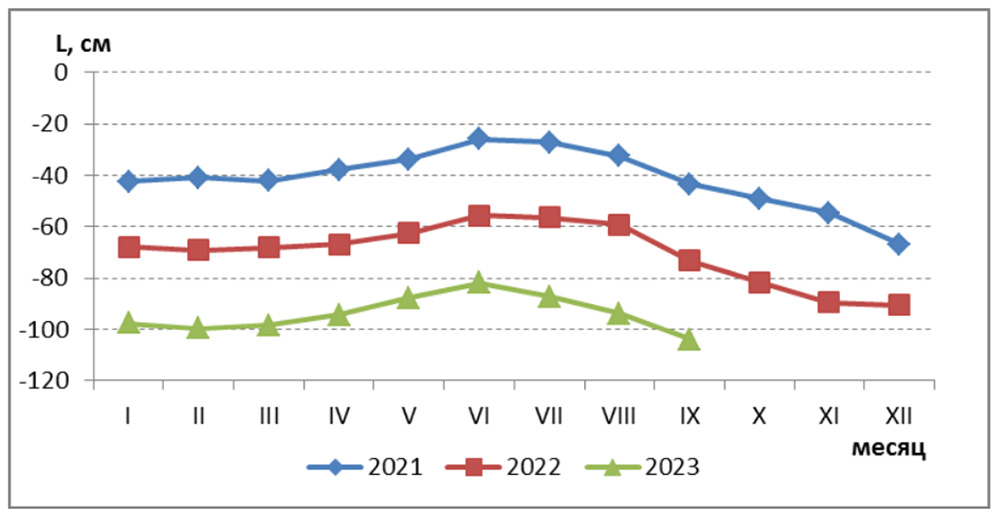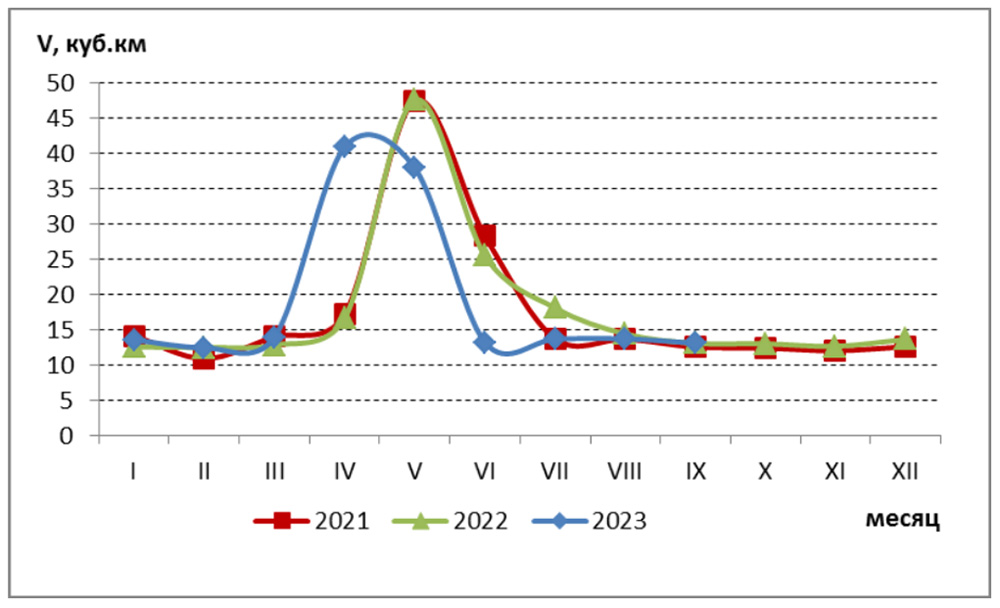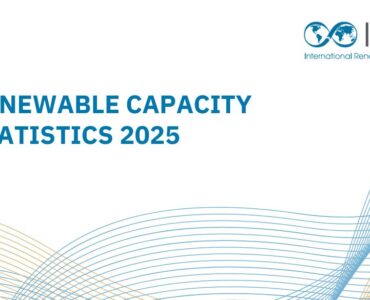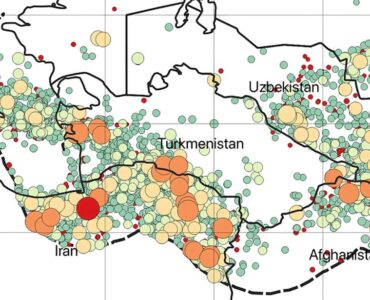The Coordinating Committee on Hydrometeorology of the Caspian Sea (CASPCOM) releases data sheets on the sea level of the Caspian Sea twice a year. Data sheets are prepared by the coordinated work of hydrometeorological organizations of 5 countries with access to the Caspian Sea, including the National Committee for Hydrometeorology (“Turkmengidromet”).
According to the latest report from November 25th, 2023, the sea level in 2022 at its peak in June was 26 cm lower than in the same period in 2021. The main reason for the reduction in sea levels was the low flow of the Volga River, which has been decreasing for the last 3 years.
Figure 1. Sea level change during the year in 2021-2023. Source: CASPCOM.
In January-September 2023, the volume of water flow in Volga was around 172 km3, which is close to the water flow volume for the same period in 2022 (173 km3). However, due to the warmer weather and earlier ice melt in the Volga basin, the freshset (annual high water in river due to snowmelt) in 2023 differed from previous years, with an earlier start and the longer flood period, but the lower maximum water flow. In general, there is a significant trend towards the lowering sea levels in the Caspian Sea in the past few years.
Figure 2. Average monthly water flow in Volga River in 2021-2023. Source: CASPCOM.

